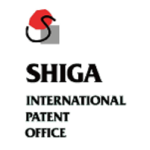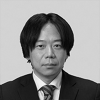The Japanese Patent Act stipulates that anyone who creates an invention with industrial applicability may obtain a patent for it (Article 29(1)). This means that patent eligibility must include industrial applicability.
Therefore, method inventions for operating on, treating, or diagnosing a human are not patentable subject matter because they are regarded as not having industrial applicability. Medical activities normally practised by medical doctors are also ineligible for patent protection. In addition, a patent right for a medical invention that is to be manufactured by two or more medicines being mixed together has no effect with respect to the preparation of a medicine according to a doctor’s prescription (Patent Act, Article 69(3)).
On March 19 2025, the Grand Panel of the Intellectual Property High Court (IPHC) issued a landmark decision in a patent infringement dispute related to a cosmetic breast augmentation procedure. For the first time in Japan, the court found that a cosmetic procedure could constitute patent infringement, deciding that the medical exemption under Article 69(3) of the Patent Act was not applicable.
The decision reversed a 2023 judgment by the Tokyo District Court, at the first instance, and ordered the defendant, a cosmetic clinical doctor, to pay approximately JPY 15 million in damages to the patentee, Tokaiika Co., a Tokyo-based medical and pharmaceutical company.
Background to the case
Claim 1 of the patent in question relates to a “composition for promoting an increase in subcutaneous tissue, comprising autologous plasma and a basic fibroblast growth factor (b-FGF)” and fat “in the form of a lipid emulsion”. The invention aims to provide a breast augmentation composition that promotes the increase of subcutaneous tissue, thereby achieving safe and natural recovery of autologous tissue and appearance by avoiding the safety problems associated with conventional breast augmentation techniques. Specifically, it is a composition for promoting an increase of subcutaneous tissue for use in breast augmentation, characterised by containing autologous plasma, b-FGF, and fat emulsion.
The defendant (Doctor X) argued that agents A and B are administered separately to the patient and this action does not fall within the patent’s scope. The Tokyo District Court upheld the defendant’s argument. Tokaiika Co. (a company owned by Doctor Y) appealed to the IPHC.
IPHC Grand Panel decision
The IPHC Grand Panel found patent infringement and clarified the scope of medical exemption in cosmetic procedures.
Findings on the act of infringement
Evidence showing that agents A and B were mixed before administration by the defendant was found. Thus, the IPHC held that this action infringed the patent.
The plaintiff argued that even if agents A and B are administered separately to the patient, these agents are mixed in the body of the patient, which falls within the patent’s scope. The IPHC did not comment on this point.
Industrial applicability
A further issue was whether the invention, which utilises patient-derived materials, meets the requirements for industrial applicability under Article 29 of the Patent Act. The defendant argued that the patent involves using blood harvested from a human body and returning it to the same human body, which, according to the defendant, violates the requirement of industrial applicability. The IPHC judged that the patent does not violate the requirement of industrial applicability on the following grounds:
The use of patient-derived materials can still be regarded as having industrial applicability, similar to regenerative medicine; and
Such inventions are developed by industrial stakeholders, including pharmaceutical companies, and thus qualify for patent protection.
The IPHC confirmed that “product inventions” used in cosmetic medicine are eligible for patent rights.
Exemption for the act of preparation of a medicine
The defendant argued that the act of preparation of a medicine by a doctor should be exempted based on Article 69(3) of the Patent Act.
The IPHC judged that the defendant’s act does not fall within this rule, since the purpose of the breast augmentation composition is aesthetic, and this composition is not recognised as a substance used for the diagnosis, treatment, or prevention of human diseases. Furthermore, the defendant contended that the preparation of the composition was exempted under Article 69(3) as a medical act. However, the IPHC did not accept the defendant’s contention and concluded the following:
The operation was conducted for aesthetic, not therapeutic purposes; and
Therefore, it does not qualify for the medical exemption, and the patent rights are enforceable.
This is the first Grand Panel decision to clarify that the medical exemption does not extend to a cosmetic or aesthetic operation.
Damages awarded
The defendant earned approximately JPY 170 million through operations between May 2020 and July 2021. The court awarded 8% of this amount (about JPY 15 million) as damages under Article 102(3) of the Patent Act.
The decision provides a practical benchmark for calculating damages in cases involving cosmetic and medical patent infringements.
Summary of the IPHC Grand Panel decision
The IPHC Grand Panel judged that the act of a doctor producing a mixed preparation for breast augmentation surgery, using blood collected from the patient as a raw material, constitutes the implementation of the patented invention related to a breast augmentation composition.
The patented invention for the breast augmentation composition was determined not to fall under the category of “a medical invention […] that is to be manufactured by two or more medicines being mixed together [substances used for the diagnosis, treatment, medical care, or prevention of human diseases]” as stipulated in Article 69(3) of the Patent Act.
Divergence between the IPHC Grand Panel and Tokyo District Court decisions
In the first instance, at the Tokyo District Court, the patentee alleged that a cosmetic surgery clinic used the patented drug formulation containing agents that promote plasma and cell growth during breast augmentation procedures without permission from the patentee. The court found that the defendant administered the agents separately to the patient and dismissed the plaintiff’s claim, stating that the cosmetic operation does not constitute patent infringement.
In the following instance, at the IPHC, the Grand Panel approached the case with different fact findings from the Tokyo District Court. The IPHC found that the defendant mixed agents A and B, and manufactured a composite that fell within the technical scope of the patented invention before administering it to the patient. In addition, the IPHC Grand Panel dismissed the defendant’s claims regarding lack of industrial applicability, insufficient support, and lack of clarity. Furthermore, the IPHC judged that this case is not exempt from the act of preparation of a medicine (Patent Act, Article 69(3)).
Implications for IP practice in Japan
It has long been considered that ‘medical activity’ performed by medical practitioners does not constitute patent infringement, even in the absence of explicit criteria. This IPHC decision suggests that cosmetic use patents may be enforceable under certain conditions, even when the actions are conducted by doctors.
Medical practitioners should give careful attention to whether medical procedures may infringe upon a patent. For IP practitioners, it would be advisable to clearly distinguish between cosmetic and therapeutic purposes when drafting claims, and to refrain from assuming that Article 69(3) automatically exempts all physician-performed procedures.
The Grand Panel’s decision marks a significant development in how Japanese patent law distinguishes between medical and cosmetic operations. It affirms that cosmetic use does not benefit from the medical exemption traditionally granted under Article 69(3) of the Patent Act.
Presiding Judge Tomonari Honda emphasised the importance of protecting innovation in medical and cosmetic technologies, particularly where industrial R&D is vital. An appeal to the Supreme Court remains possible, but this decision currently serves as a pivotal precedent for IP strategies in the medical and cosmetic sectors.












